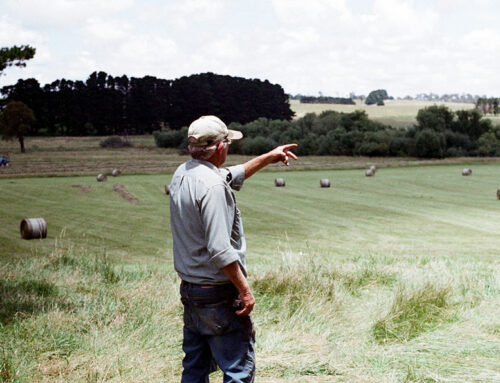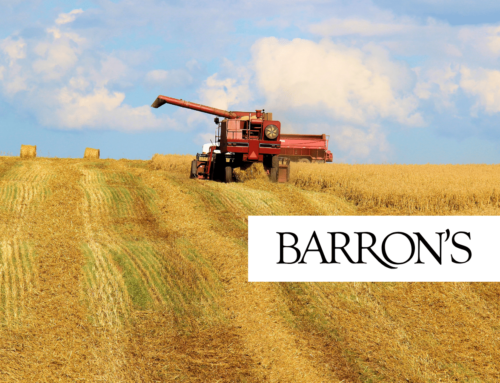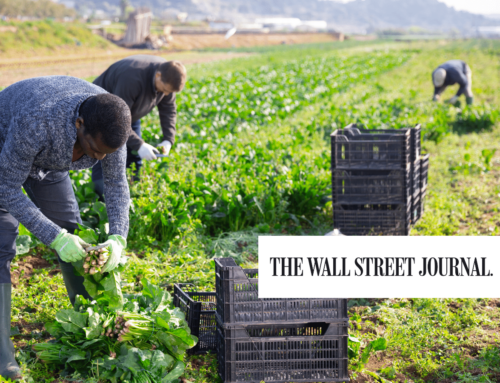View/Download this article in PDF format.
1. What is the Farm Bill?
The Farm Bill is a massive $1 trillion+ piece of legislation that guides food and farm policy. It covers wide-ranging topics ranging from rural broadband service to farm subsidy payments. The most recent farm bill, enacted in 2018, contained 12 distinct titles, or various sections under which Farm Bill programs are organized. They include the following: Commodities, Conservation, Trade, Nutrition, Credit, Rural Development, Research, Forestry, Energy, Horticulture, Crop Insurance, and Miscellaneous (yes, its actual title is miscellaneous).
2. When and why was the Farm Bill created?
The first Farm Bill was passed in 1933 during the Great Depression to help increase low crop prices and address massive soil losses from the Dust Bowl. Since then, subsequent legislation was enacted sporadically until Farm Bills were passed in more regular (five-year or so) intervals beginning in 1965.
3. Which government agency is responsible for carrying out Farm Bill programs?
Farm bill programs are generally administered by the U.S. Department of Agriculture (USDA). State and local agencies help implement and manage certain conservation, nutrition, and rural development programs. Public-private initiatives also exist in research, crop insurance, and some conservation programs. For instance, crop insurance policies are approved and regulated by USDA’s Risk Management Agency (RMA) then sold and serviced by private insurance companies. Both the premiums paid by farmers and the administrative costs for the companies are subsidized by taxpayers.
4. Legislative Process: How are Farm Bill programs adopted/implemented/modified?
The farm bill is normally renewed once every five or six years. The most recent farm bills were passed in 1985, 1990, 1996, 2002, 2008, 2014, and 2018. Many farm bill programs are authorized for the life of the farm bill (typically five years). Some programs are permanently authorized, meaning they continue indefinitely unless modified or deauthorized by Congress. Those with permanent status include crop insurance, farm subsidy, nutrition, and some conservation programs. Most of these programs are authorized to receive mandatory funding meaning annual payments do not have to first be approved by Congress on an annual basis. When a farm bill is passed, lawmakers may place spending caps on discretionary programs and sometimes also limit the amount of mandatory funding that can be spent.
At the end of a farm bill’s authorized period, if lawmakers fail to pass new farm legislation or an extension of previous law, policies would revert to permanent law from the Agriculture Adjustment Act of 1938 and the Agricultural Act of 1949. This is because when modern-day farm bills are enacted, lawmakers do not repeal outdated laws and programs, but merely temporarily suspend permanent law for the life of the new farm bill. If permanent law went into effect, parity prices for loan programs would provide high price guarantees for growers of many commodity crops. But since certain crops like soybeans, peanuts, and pulse crops were not eligible for these programs in the 1930-40s, they would lose lucrative subsidies. Consumers would also pay more for many commodities, especially milk since government policies would greatly inflate the price received by milk producers.
5. What are the different sections or titles of the Farm Bill?
The most recent Farm Bills have contained twelve titles, including the following:
-
- Commodity: crop-specific subsidies for certain crops such as corn, wheat, peanuts, soybeans, other oilseeds, cotton, and rice (through price supports, marketing loans, and shallow loss payments) and other industry-specific programs for milk and sugar
- Conservation: payments for land set-asides, plus working lands conservation practices, such as no-till, cover crops, wetlands conservation, etc.
- Trade: agricultural export and international food assistance programs
- Nutrition: domestic nutrition assistance programs like the Supplemental Nutrition Assistance Program (SNAP), emergency assistance, and healthy food initiatives
- Credit: subsidized direct loans and loan guarantees for agricultural producers
- Rural development: programs to boost rural economic development and subsidize rural housing, utilities, and broadband internet
- Research: spending on agricultural, food safety, and biotech research and extension programs
- Forestry: programs for forest protection, stewardship, and restoration, plus promotion of biomass and wood products
- Energy: subsidies for mature energy such as woody biomass, corn ethanol, and soy biodiesel, supports for renewable energy such as wind and solar, and energy efficiency initiatives
- Horticulture: programs for organic agriculture and specialty crops (like fruits, vegetables, and nuts)
- Crop Insurance: insurance premium subsidies for crop and livestock producers and administrative and operating subsidies for crop insurance companies
- Miscellaneous: provisions related to animal disease, urban agriculture, historically underserved producers, and other programs that don’t fit easily into other titles or are added to the Farm Bill during the legislative process
6. How much does the Farm Bill cost taxpayers?
The cost of federal Farm Bills has increased significantly over time. Since 2002, farm bills have roughly doubled in cost. When the 2002 and 2008 Farm Bills were passed, they were projected to cost taxpayers $451 billion and $641 billion over ten years, respectively. Their actual cost was much higher (please see Table 1 for more details). The 2014 Farm Bill was projected to cost nearly $1 trillion but will likely clock in at over $1 trillion. And finally, the most recent 2018 Farm Bill was expected to cost $867 billion over ten years but is on track to cost $200 billion more than the Congressional Budget Office (CBO) projected. In other words, each farm bill since 2002 has been (or is expected to be) over budget.
| Table 1: Projected and Actual Costs of Recent Farm Bills | |||
| Farm Bill | 10-Year Projected Cost | 10-Year Actual Cost | Cost Overrun |
| 2002 Farm Bill | $451 billion | $562 billion | $111 billion |
| 2008 Farm Bill | $641 billion | $887 billion | $246 billion |
| 2014 Farm Bill | $956 billion | $1.15 trillion | $193 billion |
| 2018 Farm Bill | $867 billion | $1.32 trillion | $456 billion |
The costliest sections of the Farm Bill, ordered from most to least expensive, include the following:
- Nutrition (roughly 85% of funding)
- Commodity (crop-specific subsidies) and crop insurance (10%)
- Conservation (4%)
- Everything else (trade, energy, horticulture, research, rural development, etc.) (1%)
Over time, costs have shifted between different sections of the Farm Bill. The Commodity Title historically cost taxpayers more than the Crop Insurance Title. However, in the most recent Farm Bill, this reversed course. The Commodity Title was projected to cost taxpayers $61 billion over ten years (FY19-28), with the Crop Insurance Title expected to cost $78 billion. Actual FY19-21 costs of the Commodity Title have been less than projected, with crop insurance costs higher than projected.
The shift in costs can be attributed to several factors, including: (1) relatively higher commodity prices in 2020 and 2021, resulting in lower price support payments since they pay out more in years of low prices, (2) higher crop prices resulting in increased crop insurance premiums and hence, taxpayer costs of indemnities tied to more frequent and intense disasters, and (3) additional expensive crop insurance add-on policies (shallow loss, margin insurance, etc.) that have been enacted over time, adding to the cost of the overall program. In sum, in years of lower crop prices, commodity program costs rise (due to higher price support payments) while crop insurance premium subsidies are generally lower since they’re tied to current prices, and vice versa during times of higher crop prices.
By comparison, just 4-5% of farm bill funding is spent on agricultural conservation programs, which fund practices such as no-till, cover crops, conservation of wetlands, installation of grassed buffers, and more. These practices can help reduce the need for expensive fertilizer and other crop inputs, increasing farmer profitability and reducing risk of future crop losses due to disasters. Certain practices also help sequester soil carbon, improve water quality, and lead to other public benefits.
Several farm bill programs also contain hidden costs. Examples include U.S. sugar and milk policies which often do not involve federal spending but do raise costs of products for consumers.
7. Who benefits from Farm Bill programs?
Aside from recipients of nutrition assistance programs, the primary beneficiaries of Farm Bill programs are large farm businesses growing five main crops, including corn, soybeans, wheat, cotton, and rice. Since farm subsidy programs were originally written to satisfy a few special interests, it is no surprise that approximately 80% of these subsidies go to growers of only five main crops. According to USDA, the largest farm businesses receive the majority of farm subsidy payments. In 2009, the top 12% of farm businesses took in 62% of all federal farm payments; the average payment to large, commercial farms (with annual sales over $250,000) was $31,700 while farms with lower sales received only $4,500 per year. Those reaping the most benefits also have incomes twice as high as the average U.S. household.
8. What are the most prominent changes to the Farm Bill?
Although U.S. farm policy has changed since its inception in the 1930s, the status quo still lives on. The government continues to play a major role in managing individual farm business risks. Special interests, primarily the farm lobby, have ensured that expensive subsidies are paid out every year regardless of the state of the farm economy, national debt, or disasters affecting agricultural production. The form of subsidy payments has evolved over time. For example, in 1996, Congress attempted to eliminate traditional farm supports by creating direct payments. Although this “temporary” subsidy lived on until its demise in 2014, Congress replaced them with shallow loss subsidies that ensure producers receive high levels of projected income (up to 95 percent) each year. Subsidy payments kick in when producers receive as little of a five percent drop in expected income.
Since 2018, agricultural businesses have benefited from explosive growth in income subsidies from programs authorized outside of the farm bill. These include “emergency” assistance provided in response to natural disasters, COVID-19-specific programs, and federal payments to compensate for losses due to President Trump’s trade war. While these expenditures occurred outside the farm bill process, they cost taxpayers tens of billions of dollars and significantly increased the size and scope of the farm safety net. Ad hoc disaster aid, enacted through supplemental appropriations legislation, has totaled approximately $20 billion just for crop years 2017-2022. The Market Facilitation Program (MFP), subsidies for certain crops affected by Trump’s trade war, cost taxpayers another $28 billion. COVID-19 aid resulted in tens of billions more – nearly $40 billion for agricultural income subsidies, smaller food assistance programs (aside from additional spending on SNAP), etc. Agricultural businesses also received $15 billion in non-USDA pandemic assistance such as loan forgiveness in the Small Business Administration’s Paycheck Protection Program.
9. Why should taxpayers care about the Farm Bill?
The Farm Bill is in dire need of reform, particularly its commodity and crop insurance sections. The agricultural sector is much different than it was in the 1930s, yet U.S. policies have not conformed to these changes. Over time, government involvement in U.S. agriculture has caused programs to become duplicative, work at cross-purposes, benefit special interests at the expense of others, result in unintended consequences, violate international trade rules, and distort decision making in farming. Certain commodity and crop insurance programs fail to prepare agriculture for the challenges of today and tomorrow, such as climate change. With record national debt and a profitable farm sector, now is the time to take a step back and reevaluate the government’s role in American agriculture. A more cost-effective, transparent, and accountable farm safety net that is responsive to need and promotes resilience, instead of dependence on federal subsidies, can be created, but reform is necessary.











Get Social